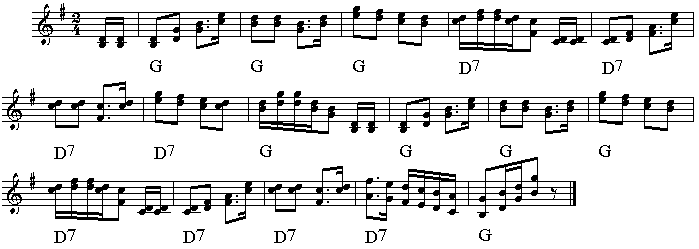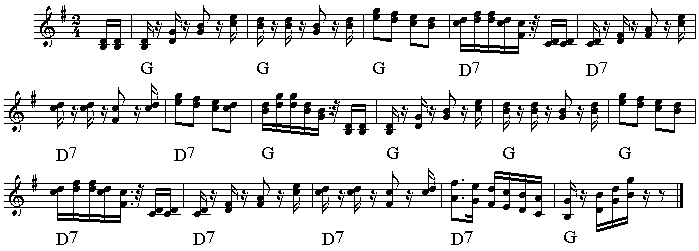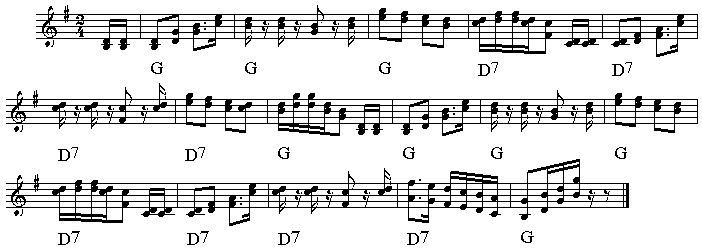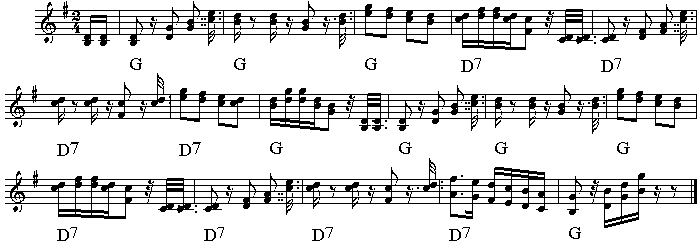How is swinging rhythm gained?
With the example of Gretlboarisch (Gretlpolka vom Edlertrio)I will show the rhythmic variations, and how swinging rhythm is accomplished.
First the tune or the melody arranged with two voices. This is the usual way alpine folk music is written, plain, without adding for phrases, accentuation and rhythm. You can start the midi file by clicking on the note sheet.
JavaScript is not functioning on your Pc? Click here to start the midi files.
For my test all this is a bit stale and without any swing. Now I start to experiment, try to add small rhythmic changes, some notes get shorter, nearly staccato, and with a pause filling in to get the original length. All notes sound a bit shorter than notated. So we get a clear sound without notes smeared into each other. Please listen to it now.
JavaScript is not functioning on your Pc? Click here to start the midi files.
Sounds a bit better now, but I am not completely satisfied. Perhaps it was too much of a change? Too many short notes? How does it sound with smaller changes? I like to test many versions, you should do this also. There are many more ways to change things than I show here. Now you can listen to my second variation.
JavaScript is not functioning on your Pc? Click here to start the midi files.
Sounds certainly better, but still, what could be changed or tried further? In the following example I overdo it badly! I extend some passages, the 1st and the 3rd counts of the measure, a bit and shorten the 2nd and the 4th counts. Nobody writes notes this way. But near as the following sounds, in this way some notes could be played.
JavaScript is not functioning on your Pc? Click here to start the midi files.
Satisfied? I am not. With midi I can’t show everything, that is possible to do with the fingers on my Steirische without problems. And there are no volume differences at all and the rhythm is still as if it was made with a wood hammer. But the rhythm shown is already quite close to the way I consider swinging rhythm.
Caution please, don’t copy my way directly, neither this example nor this manner in general. This would not satisfy me at all. What you play should be liked by you, and only by you. If others like it too, ok that’s fine. If it is not liked by you, it does not matter if it could be liked by others. Why should you play tunes not liked by you?
I think there are always more ways to do a tune, not just one, or the one I tried to show. Please experiment with different ways, listen to yourself and then you take the one you like.
And if you like the Gretlboarisch in complete length, here I have our variant published. Und here is the original version from the Edler-Trio.
![]()
[Deutsche Version]




